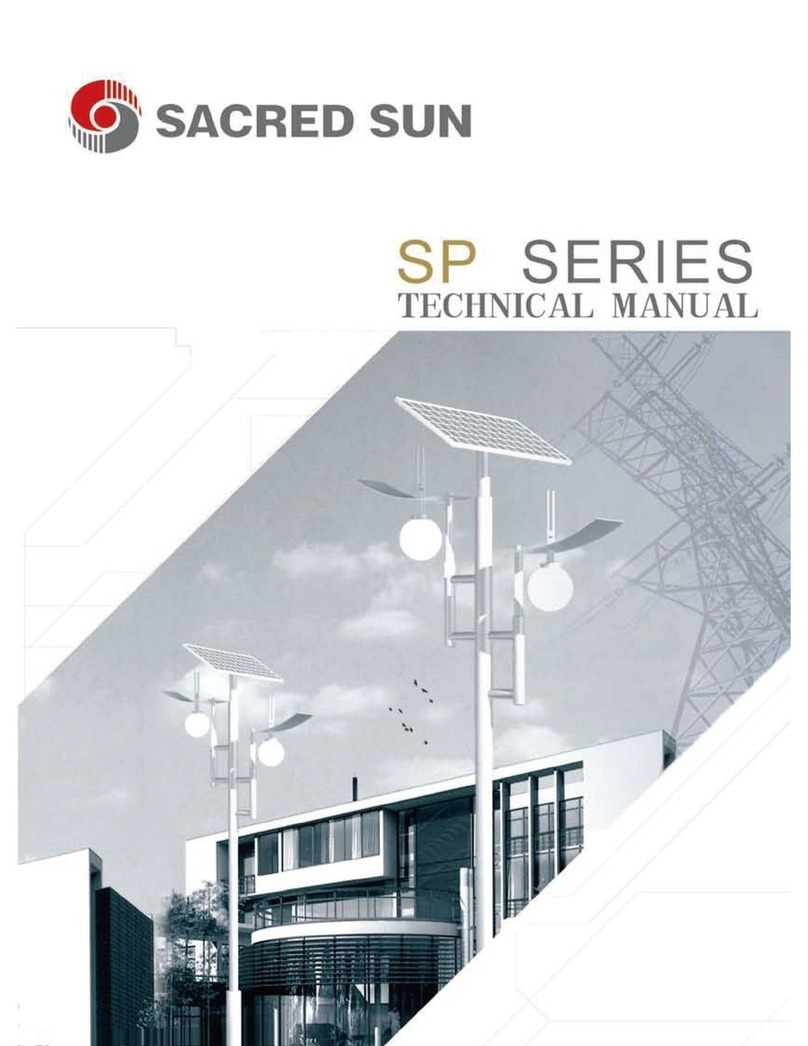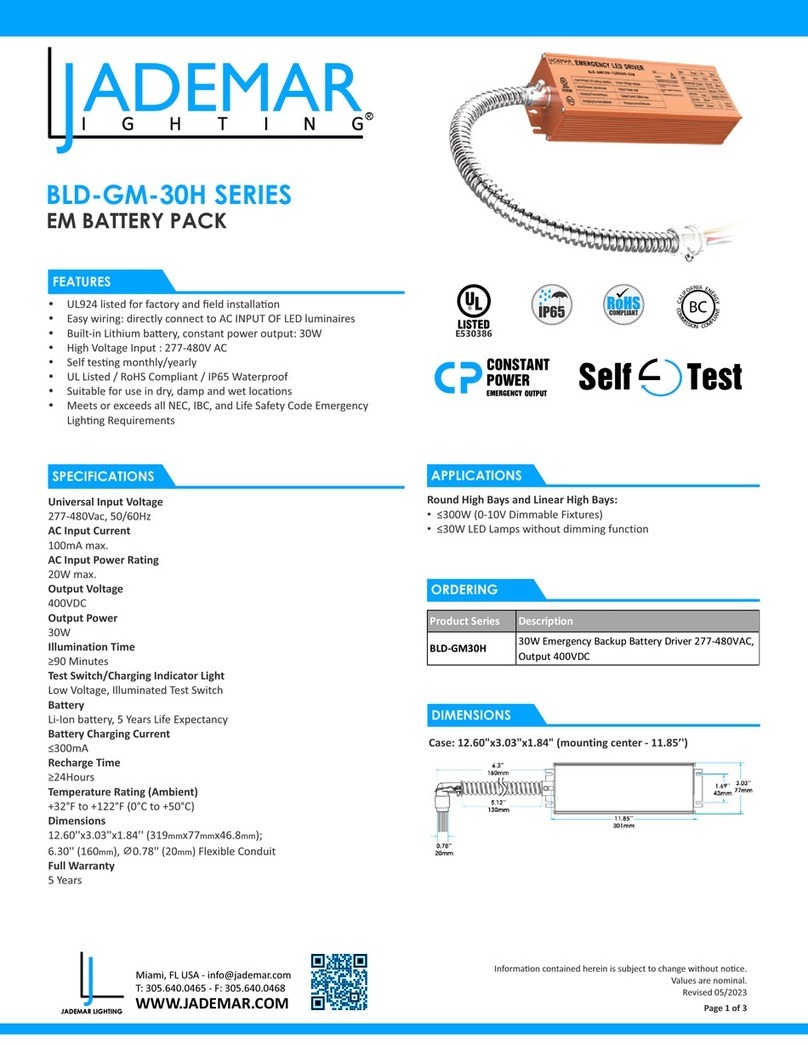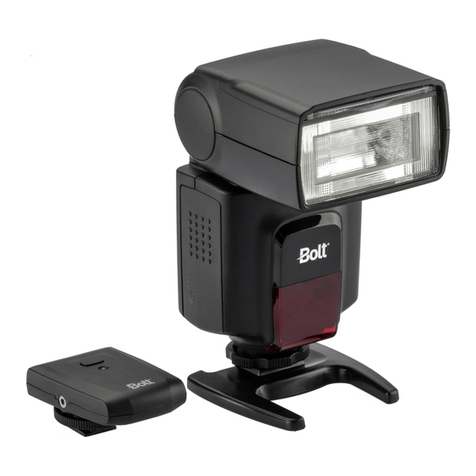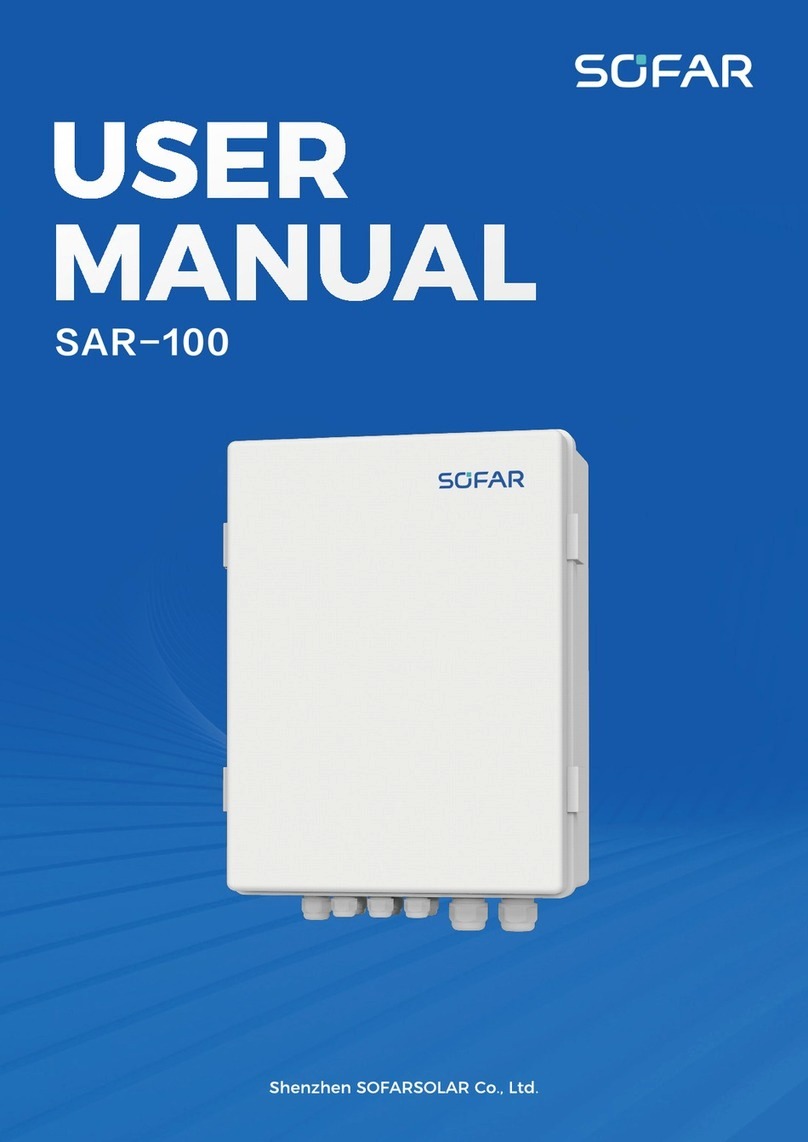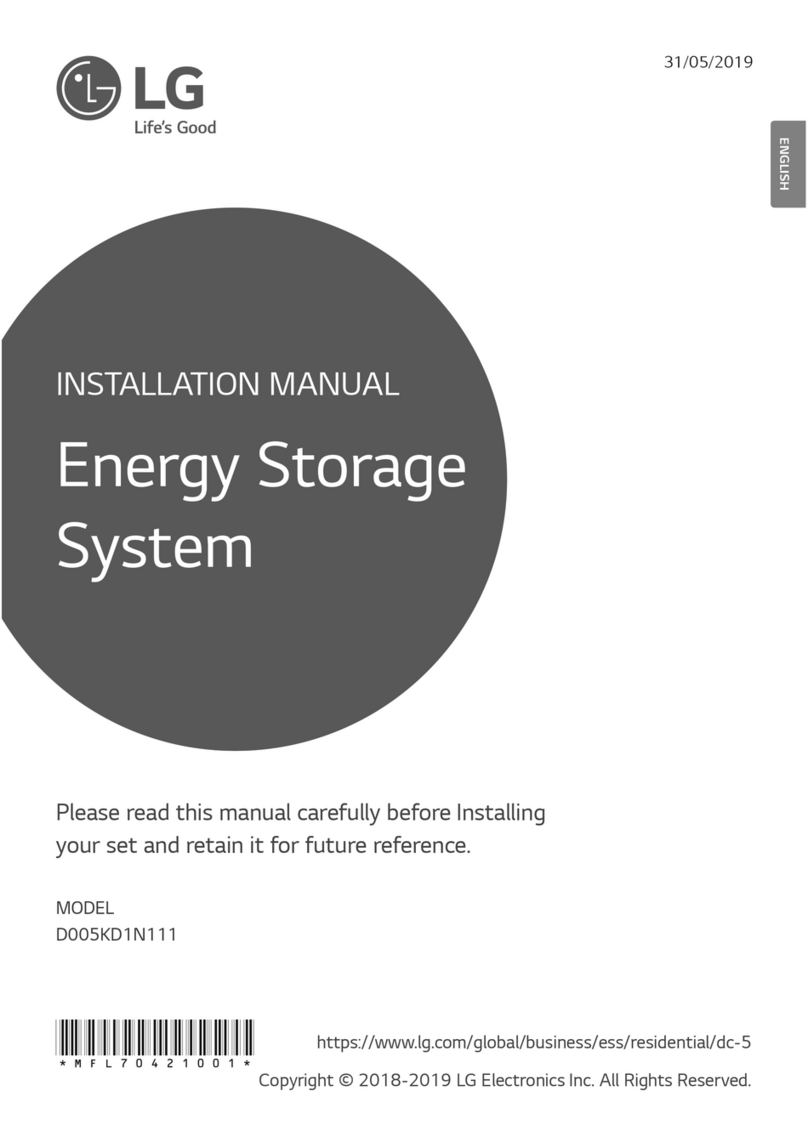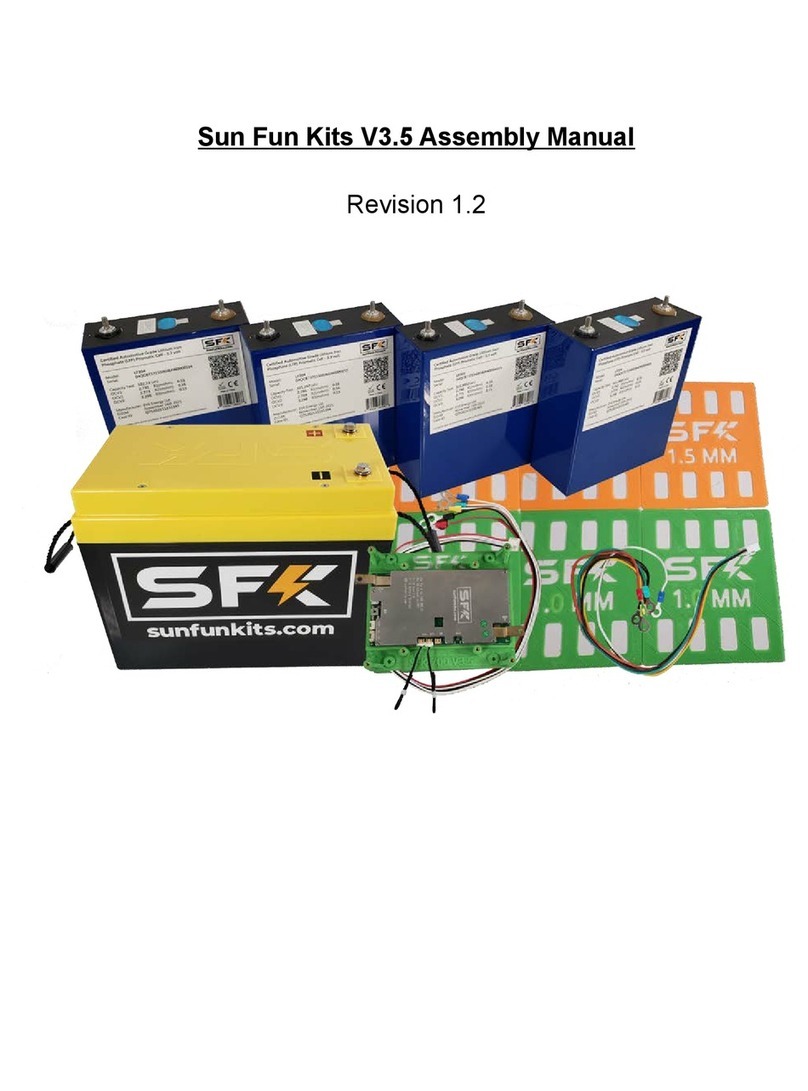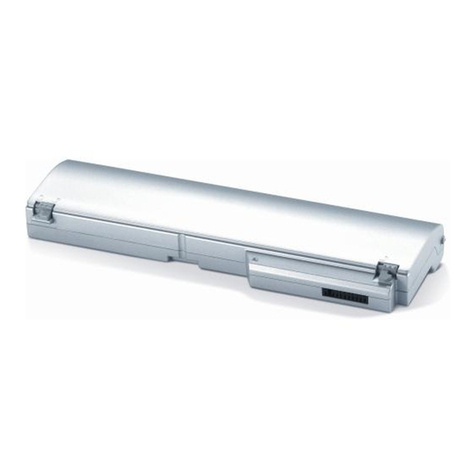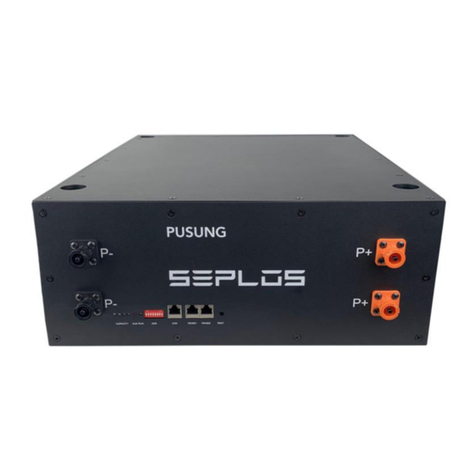Solarbatt ESS Series User manual

ESS Series Battery
User Manual
B20L48V100
B20L51V100
Version: 01.02

User Manual
Notice
The products, services or features you purchase shall be bound by the commercial
contract and terms of Solarbatt. All or part of the products, services or features
described in this document may not be in your purchase or within the scope of use.
Unless otherwise agreed in the contract, Solarbatt makes no express or implied
statement or guarantee for the content of this document.
Due to product version upgrades or other reasons, the content of this document will
be updated from time to time. Unless otherwise agreed, this document is only used
as a guide, and all statements, information, and suggestions in this document do not
constitute any express or implied warranty.
The final interpretation right belongs to Solarbatt.

User Manual
CONTENTS
1 Foreword……………………………………………………………………...………………………………….……1
2 Safety……………………………………………………………………...………………………………….…………3
2.1 Safety Precautions………………………………………………………………………………………....3
2.2 Abuse Operation……………………………………………………………………………………….…..3
3 Overview………………………………………………………………………………………………………….……4
3.1 Product Description…………………………………………………………...…………………….……4
3.1.1 Features……………………………………………………....……………………………...….….…4
3.1.2 Basic Functions……………………………………………………………………………….…….4
3.2 Application Scenario………………………………………………………………………………….….5
4 Application Description…………………………………………………………..……………………….…...6
4.1 Low-temperature Application……………………………………………………………..….….….6
4.2 Low Battery-capacity Storage (SOC≤5%)...…………………………………………….…...…6
4.3 Application of Nearing the Ocean…………………………………….…………………………..6
4.4 Installation Location Requirements.………………………………….…………………………..7
4.5 Recycling and Disposal…………………………………….……………………………………………7
4.6 Operation Restrictions…………………………………….……………………………………………8
5 Product Introduction……………………………………………………………………………………………9
5.1 Panel Introduction………………………………………………………………………………………..9
5.1.1 Panel Function……………………………………………………………………………………..9
5.1.2 Indicator Description………………………………………………………………………..…10
5.1.3 DIP Address………...……………………………………………………………………………...11
5.1.4 Communication Port Definition…………………………………………………………..14
6 Installation. ....................................................................................................................................... 15
6.1 Tools Preparation ................................................................................................................. 15
6.2 Open Package Inspection .................................................................................................. 16
6.2.1 Packing List……………………………………………………………………………………….. 16
6.3 Installation ............................................................................................................................... 18
6.4 Cable Connection ................................................................................................................. 19
6.4.1 Power Cable Connection……………………………………………………………………..19
6.4.2 Communication Cable Connection……………………………………………………...20
6.4.3 120Ω Resistor Connection…...………….………………………………………………….22
6.5 DIP Address Setting ............................................................................................................. 22
7 Power On .......................................................................................................................................... 23
7.1 Power-on Operation ............................................................................................................ 23
7.2 Power-off Operation ........................................................................................................... 23
7.3 Power System Parameter Setting ................................................................................... 22
7.4 UIWare Configuration ......................................................................................................... 24
7.5 Check by UIWare .................................................................................................................. 25
7.6 Wake Up Battery from Sleep Mode ............................................................................... 26
8 Shipment & Maintenance & Storage. ..................................................................................... 27
8.1 Shipment. ................................................................................................................................ 27
8.2 Maintenance. .......................................................................................................................... 27
8.2.1 Battery Maintenance Considerations…………………………………………………..27
8.2.2 Routine Maintenance………………………………………………………………………….28
8.3 Battery Storage ...................................................................................................................... 29
9 Trouble Shooting ........................................................................................................................... 30
10 Warranty ......................................................................................................................................... 31
11 Abbreviations ................................................................................................................................ 32
12 Extra Supplies Available Battery Cable Kit .......................................................................... 33
Appendixes. Inverter Communication with Solarbatt Battery ..................................... 34

1 Foreword
1
Overview
This operation manual mainly introduces the ESS series product introduction,
application description, installation, power-on, maintenance and provides
instructions for technical support engineers, maintenance engineers and users.
Reader
This document is mainly applicable to the following engineers.
Technical Support Engineer
Installation Personnel
Maintenance Engineer
Symbol in Label, Manual and Product
Sign
Meaning &Description
Danger: Indicates a hazard with a high level of risk that will cause death or
serious injury if not avoided.
Warning: Indicates a hazard with a moderate risk that may cause death or
serious injury if not avoided.
Notice: Indicates a hazard with a low level of risk that may cause minor or
moderate harm if not avoided.
Explanation: Supplementary explanation of key information in the main text.
"Explanation" is not safety warning information, and does not involve personal,
equipment and environmental damage information.
Label for Waste Electrical and Electronic Equipment (WEEE)Directive
(2012/19/EU)
Read the product and operation manual(instructions) before operating the
battery system!
Do not place near open flame.
Recycle label.
The certificate label for EMC.
Warning electric shock.

1 Foreword
2
Signe
LA description
Danger: Indique un danger avec un niveau de risque élevé qui entraînera la
mort ou des blessures graves s'il n'est pas évité.
Avertissement: Indique un danger avec un risque modéré qui peut entraîner la
mort ou des blessures graves s'il n'est pas évité .
Avis: Indique un danger avec un faible niveau de risque qui peut causer des
dommages mineurs ou modérés s'il n'est pas évité.
REMARQUE
Explanation: Explication supplémentaire des informations clés dans le texte
principal. "Explication" n'est pas un avertissement de sécurité et n'implique pas
d'informations sur les dommages personnels, matériels et environnementaux.
Label for Waste Electrical and Electronic Equipment (WEEE)Richtlinie
(2012/19/EU)
Lesen Sie die Produkt- und Bedienungsanleitung (Anleitung), bevor Sie das
Batteriesystem in Betrieb nehmen!
Nicht in die Nähe von offenem Feuer stellen.
Etikett recyceln.
Das Zertifikatsetikett für EMV.
Warnung Stromschlag.

2 Safety
3
2.1 Safety Precautions
Before carrying out battery work, you must read carefully the safety precautions
and master the correct installation and connection methods of the battery.
Prohibit to turn it upside down, tilt, or collide.
Prohibit to short-circuit the positive and negative poles of the battery,
otherwise it will cause the battery to be damaged.
Prohibit to throw the battery pack into a fire source.
Prohibit to modify the battery, and it is strictly prohibited to immerse the
battery in water or other liquids.
DO NOT place installation tools on the battery during battery installation.
DO NOT disassemble, squeeze, bend, deform, puncture, or shred the
battery without the authorization of supplier and authorized dealers.
DO NOT exceed the temperature range, otherwise it will affect the battery
performance and safety.
The battery circuit must be kept disconnecting status during installation
and maintenance operations.
Check the battery connection end bolts regularly to confirm that the bolts
are tight.
2.2 Abuse Operation
The battery pack needs to avoid abuse operations under the following (includ-
ing but not limited to) conditions:
Abuse Operation
Protection Description
Reverse connection of positive
and negative poles
If the positive and negative poles are connected reversely, the
battery will be directly damaged.
External short circuit
If the battery pack is short circuited externally, the battery will
be directly damaged.
Series connection application
The battery pack does not support the application of battery
packs in series. If the battery packs are forced to be
connected in series, the batteries may be directly damaged,
and may even cause fire, explosion and other dangers.

3 Overview
4
3.1 Product Description
The B20L48V100/B20L51V100 ESS series products use lithium iron
phosphate (LFP) as the positive electrode material. It can be widely used in
energy storage systems such as residential energy storage, back-up power, and
PV self-consumption optimization.
The battery pack is composed of 15 cells/16 cells of LFP batteries in series
connection, with low self-discharge, high energy density, and no memory effect. This
type of battery also has excellent performance in high rate, long cycle life, wide
temperature range, and high safety.
3.1.1 Features
High energy density
Higher volume ratio energy and weight ratio energy.
Maintenance-free
The battery pack is maintenance-free in the process of using, which can save
customers' battery operation, maintenance testing costs and reduce the frequency of
on-site replacement.
Long cycle life
The battery pack life is 3 times long than the ordinary lead-acid batteries.
3.1.2 Basic Functions
Monitor
The battery system uses a high-performance BMS, it has protection functions
such as over current, over voltage, high and low temperature, etc.
Alarm
Support abnormal alarms such as over voltage, undervoltage, over current,
short circuit, high and low temperature, battery failure, hardware failure, etc.
Communication
Provide dual RJ45 interfaces, upload alarming and status data through the
RS485/ CAN communication protocol.
Balance function
Support the cells balance function.

3 Overview
5
3.2 Application Scenario
The battery pack is used to provide backup power, load shifting, peaking
shaving and can be used for residential energy storage, solar energy storage and
other application scenarios.
If there is a monitoring platform or APP of the customer's terminal
Charger/Inverter for battery configuration, then the battery status and data can be
easily monitored through the inverter's monitoring platform or APP.
The normal working operation diagram of the battery pack can be as shown in
the figure below.
Figure 3-1 Normal Working Operation Diagram of the Battery Pack
Smart Meter Power Grid
Normal Load
Important Load
Cloud MP
PV
DC
AC
Communication
Hybrid Inverter
Battery

4 Application Description
6
4.1 Low-temperature Application
Low-temperature charging
The battery pack does not support direct charging of the battery below 0°C.
When the minimum temperature of the battery is below 0°C, the BMS will cut-off
the charging circuit and cannot be charged.
Low-temperature discharging
The battery pack does not support discharge below -20°C. When the
minimum temperature of battery is below -20°C, the BMS will cut-off the
discharge circuit and cannot discharge.
4.2 Low Battery-capacity Storage (SOC≤5%)
After the battery pack is powered off, there will be BMS static power
consumption and self-discharge loss. In actual scenarios, it is necessary to avoid low-
battery-power state(SOC≤5%)storage. If it is unavoidable, the longest storage
period is 30 days@25°C, 15 days@45°C. The battery needs to be recharged in time
after storage, otherwise the battery may be damaged due to over-discharge, and the
entire battery pack needs to be replaced.
The following conditions may cause the battery pack to be stored in a discharged
state:
After the utility power failure, the line/fault cannot be eliminated in time, and
the power supply cannot be restored for a long time.
After the installation and commissioning work is completed, the utility power
is turned off directly, but the battery pack is not powered off, which will cause the
battery to enter the low power consumption mode.
Other reasons cause the battery pack to fail to enter low power consumption
normally.
4.3 Application of Nearing the Ocean
The atmospheric corrosion environment is defined and classified according to
the natural environment state, and the A/B environment is defined as follows:
A. environment refers to the ocean or the land near the pollution source, or
the environment with simple shelter (such as awning. "Near the ocean" refers to the
area 0.5~3.7km away from the ocean; "Near the pollution source" refers to the area
within the following radius: 3.7km from the saltwater lake, 3km from heavy pollution
sources such as smelters, coal mines, and thermal power plants, chemical industry,
rubber, electroplating, etc. 2km from medium pollution sources such as chemical

4 Application Description
7
industry, rubber and electroplating, etc. And 1km from light pollution sources such
as food, leather and heating boilers, etc.
B. environment. Refers to the environment on land or outside with simple
shelter (such as awning within 500m from the coast, or the environment on the sea.
NOTE
The battery pack can be used under other environmental conditions
and cannot be used alone under A/B environment. If it is to be used in the A/B
environment, it needs to be equipped with a high-protection air-conditioning
cabinet, which is recommended to be IP55 or higher.
4.4 Installation Location Requirements
• Please install the battery pack indoor.
• The area is completely waterproof.
• There are no flammable or explosive materials.
• The distance from heat source is more than 2 meters.
• The distance from air outlet of inverter is more than 0.5 meters.
• The minimum clearance to battery pack is more than 5mm, rack, cabinet or any
object is more than 0.5 meters.
• The installation areas shall avoid of direct sunlight.
• There is no mandatory ventilation requirements for battery pack, but please avoid
of installation in confined area. The aeration shall avoid of high salinity, humidity
or temperature.
• Batteries are not allowed to be installed in the habitable space of the residence.
4.5 Recycling and Disposal
Failed batteries contain varieties of heavy metals, corrosive organic solvent, carbon
and other harmful materials, and if they are threw away arbitrarily, it is too harmful to
the environment and public health.
Failed batteries need to be recycled and disposed of according to local policies.
Supplier can provide the recycling guideline about the lithium battery, which can help
the end user to guide how to recycle and dispose the lithium battery.

5 Product Introduction
8
4.6 Operation Restrictions
• ONLY can support Max. 15 batteries in parallel.
• A single battery connected to the inverter must not exceed 5kW. When more than
4 batteries are connected in parallel, the total power of the inverters must not
exceed 16kW.
• DO NOT use batteries with a large state of charge (SOC) gap ( >30% ) together.
• DO NOT replace the BMS or other components without Solarbatt‘ consent.
• DO NOT use with different type of batteries that are not form Solarbatt.
• DO NOT use beyond the temperature condition specified in the user manual.
• Do not let the battery go into sleep mode after over-discharge, which will severely
damage the battery.
• Maximum discharging energy will not exceed 4 kWh every day within 80% DoD
under 35℃.

5 Product Introduction
9
5.1 Panel Introduction
5.1.1 Panel Function
Figure 5-1 B20L48V100 Front Panel
NOTE
ESS series panel functions take B20L48V100 as an example.
The interface definition as below table:
Table 5-1 Operation Panel Interface Definition
No.
Name
Description
Remark
1
SOC
State of capacity
Details shows in table5-3
2
ALM
Alarm light
Details shows in table5-4
3
RUN
Run state of battery
Details shows in table5-4
4
RESET
Reset switch
Restart battery and recover
some certain alarms status
5
ADD
Dip switch
Address range 0~15
6
RJ-11
RJ-11 interface
for firmware update
Used only for professional
maintenance
7
RJ-45
2*RJ-45 interface for
RS485/CAN communication
Details shows in table 5-6
8
Battery Output
Power terminal
-
9
Switch
Power switch
10
GND
Module ground connection
-
11
Dry Contact
(Optional)
NC. / NO. dry contact

5 Product Introduction
10
NOTE
The position or terminal block of the above-mentioned panel interfaces is
different for different ESS series products. Please refer to the corresponding product
datasheet.
5.1.2 Indicator Description
There are 6 indicators on the operation panel, divided into three categories: 4
green SOC Indicators, 1 red alarm Indicator and 1 green run indicator.
Table 5-2 Indicators Flash Mode
Flash mode
ON
OFF
Common name
Flash Mode 1
0.25 s
3.75 s
/
Flash Mode 2
0.5 s
0.5 s
Slow Flash
Flash Mode 3
0.5 s
1.5 s
/
Flash Mode 4
0.25 s
0.25 s
Strobe
The power indicator is used to identify the current capacity status of the battery.
The number of flashing indicators corresponds to different remaining capacity. The
specific meaning is shown in the following table.
Table 5-3 SOC Indicator Definition
Number of Indicator
Remaining Capacity Range
1 indicator on
0%<SOC≤25%
2 indicators on
25%<SOC≤50%
3 indicators on
50%<SOC≤75%
4 indicators on
75%<SOC≤100%

5 Product Introduction
11
The corresponding relationship between battery operation status and indicator
operation status is shown in the following table.
Table 5-4 Battery Status and Indicator Operation Mode
Battery
Status
Normal/
Abnormal
RUN
ALM
SOC Indicators
Description
-
-
●
●
●
●
●
●
-
Power off/
Sleep
-
OFF
OFF
OFF
OFF
OFF
OFF
-
Standby
Normal
Flash 1
OFF
According to SOC
Flash mode shown
in Table 5-2
Charge
Normal
Flash 2
OFF
According to SOC
-
Discharge
Normal
ON
OFF
According to SOC
-
Alarm
Abnormal
According to the
state of charge
and discharge
Flash 2
According to SOC
Recoverable
Error
Abnormal
OFF
ON
OFF
-
5.1.3 DIP Address
Please assign an address to the battery BMS through the DIP switch to
communicate with the battery.
Figure 5-2 DIP Switch

5 Product Introduction
12
The relationship between DIP address and BMS address as below:
Table 5-5 Correspondence between BMS and DIP switch
NOTE
when installing more than one battery, the addresses need to be assigned
according to the number of packs installed.
When the battery and the external device use the CAN communication
mode, the battery(master) connected to the external device is set to 0, and the other
packs(slave) are set to 1/2/3 in sequence. For example, three batteries in parallel.

5 Product Introduction
13
Figure 5-3 ADD Address Setting
When the battery and the external device use the RS485 communication
mode, the battery connected to the external device is set to 1, and the other packs
are set to 2/3/4 in sequence. For example, three batteries in parallel.
Figure 5-4 ADD Address Setting

5 Product Introduction
14
5.1.4 Communication Port Definition
RJ 45 definition as below:
Table 5-6 RJ 45 Definition
NOTE
The above is the definition of conventional communication, if you
have special needs, please contact supplier or an authorized dealer.

6 Installation
15
6.1 Tools Preparation
ATTENTION
Use insulated tools to avoid electric shock. If tools without insulation
protection, you need to wrap the exposed metal parts with insulation tape.
The following table describes the tools and meters that may be used before
installation.
Table 6-1 Installation
Manual forklift
Electric forklift
Electric screw driver
Adjustable wrench
Phillips screwdriver
Slotted screwdriver
Torque wrench
Claw Hammer
Socket wrench
Multimeter
Protective gloves
Helmet
Insulated shoes
Anti-static gloves
Goggles
Insulating tape

6 Installation
16
6.2 Open Package Inspection
1 Move the battery to the nearby of site.
2 Open the package and check whether the items are complete.
3 Check the appearance whether there is the damage or leakage.
4 Indoor installation as the battery pack is IP20.
5 Battery pack are designed to be installed in a rack or cabinet.
6 Battery pack rack/cabinet not provided with battery system and are considered
outside the scope of product certification.
7 Package items.
6.2.1 Packing List
Table 6-2 Packing List
Battery *1
M6*2
M8*2
Grounding Cable*1
120Ω Resistor*1
RJ 45*1
Snap Nut*4
M6*25 Screws*4
RJ 45 Dust-proof
Plug*3
RJ 11 Dust-proof
Plug*1
Serial Number
Sticker 1-8 *1
Serial Number
Sticker 9-16 *1
Cable Tie*10
User Manual*1
Warranty Card*1
Packing List*1

6 Installation
17
ATTENTION
The battery is heavy, if possible, please use tools to assist in handling.
NOTE
If the damaged or leakage is found in battery, please do not proceed
to the next step, and contact supplier or an authorized dealer in time.
Power and communication cables connect to inverter belongs to an
External Cable Kit, not include in battery carton box. They are in another extra
cable box.
If there any cable kit is missing, please contact the supplier or an
authorized dealer.
6.3 Installation
1 Make sure the power system is in off state.
2 Put the battery into cabinet or rack.
3 Use 4 M6x25 bolts to fix the battery pack on the cabinet.
4 Take out the ground wires and connect one end to the ground point of the battery
pack and the other end to the ground point of the cabinet.
ATTENTION
The battery pack should be installed by professionally trained person, and it
is strictly forbidden to install it without permission.
Use insulated tools during installation to avoid electric shock. If tools without
insulation protection, you need to wrap the exposed metal parts with insulation
tape.
The battery pack is heavy, and at least 4 manpower must be prepared during the
transportation and installation. If possible, please use tools to assist in handling.
※ For the Australian market, when batteries are connected in parallel or to the
Charger or Inverter, an overcurrent protection and isolation device (e.g. DC breaker) that
isolates positive and negative conductor simultaneously must be installed between
parallel batteries and also between inverter and battery system.
※ In Australia installations must comply by AS/NZS 5139 by law.
This manual suits for next models
2
Table of contents
Popular Batteries Pack manuals by other brands
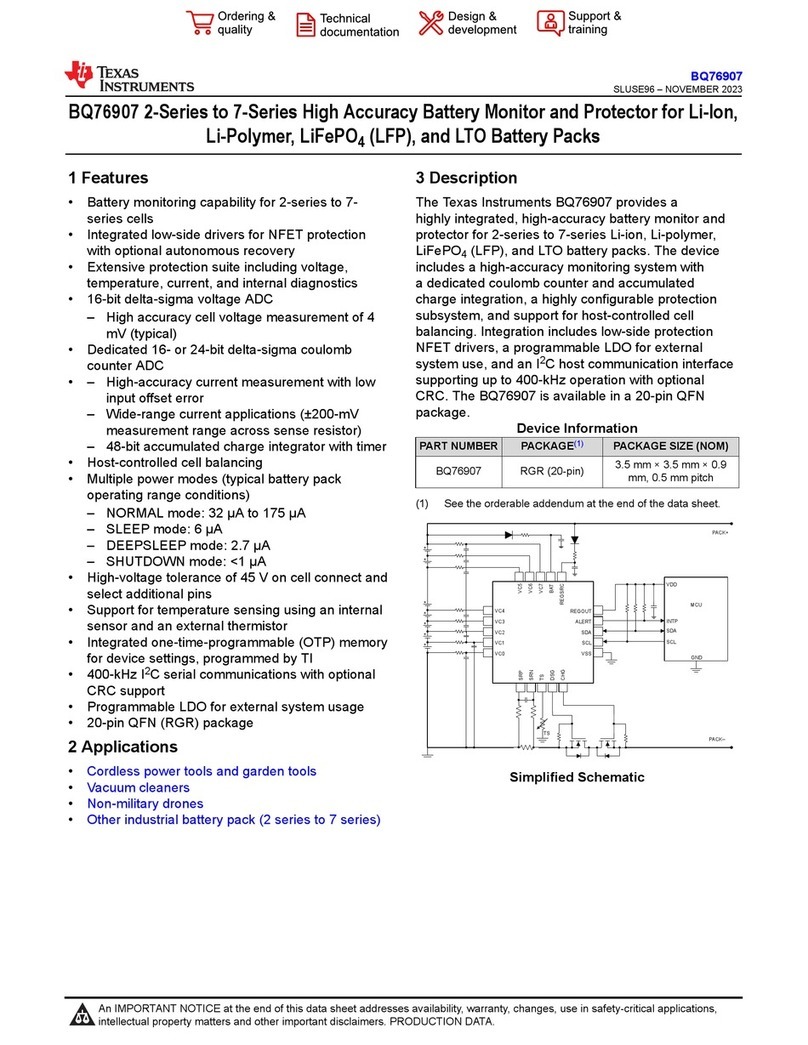
Texas Instruments
Texas Instruments BQ76907 manual
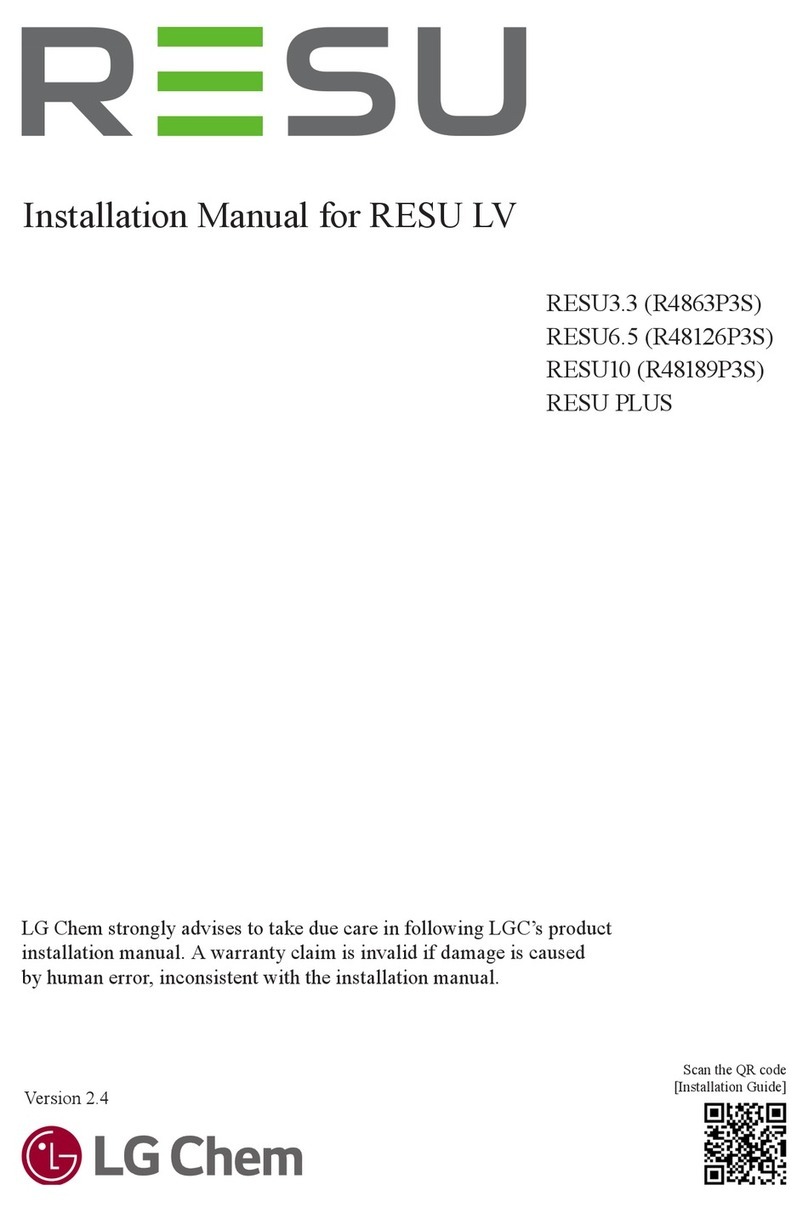
LG
LG RESU3.3 installation manual

AXITEC
AXITEC AXIstorage Li SH Installation instruction
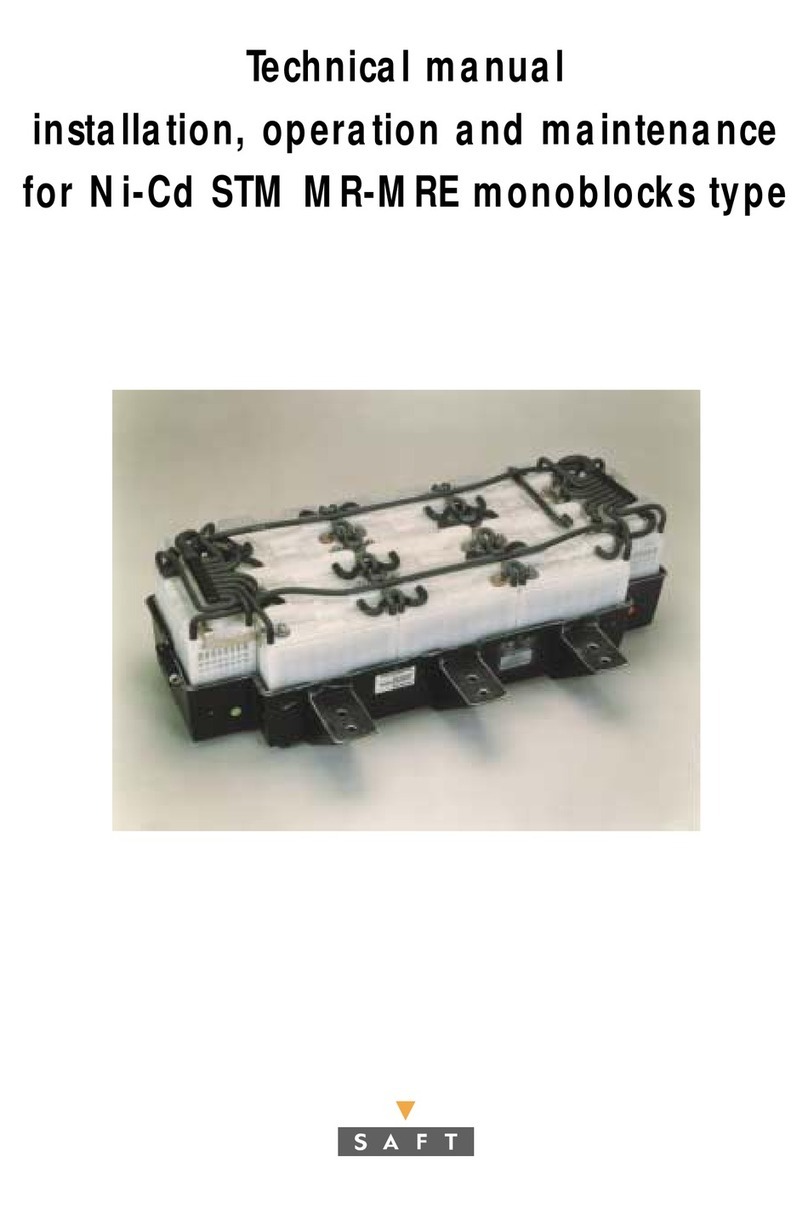
Saft
Saft STM 5-100 Technical Manual Installation, Operation and Maintenance

Husqvarna
Husqvarna 40-B140X Operator's manual
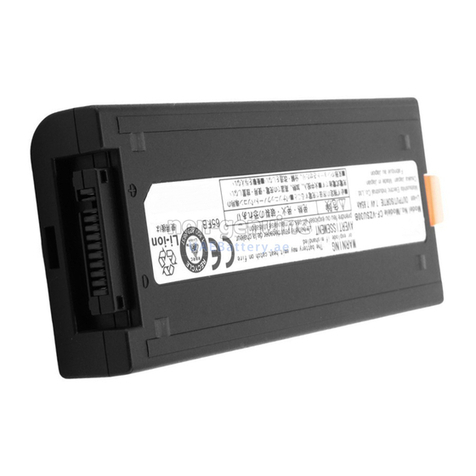
Panasonic
Panasonic CF-VZSU30BU operating instructions


